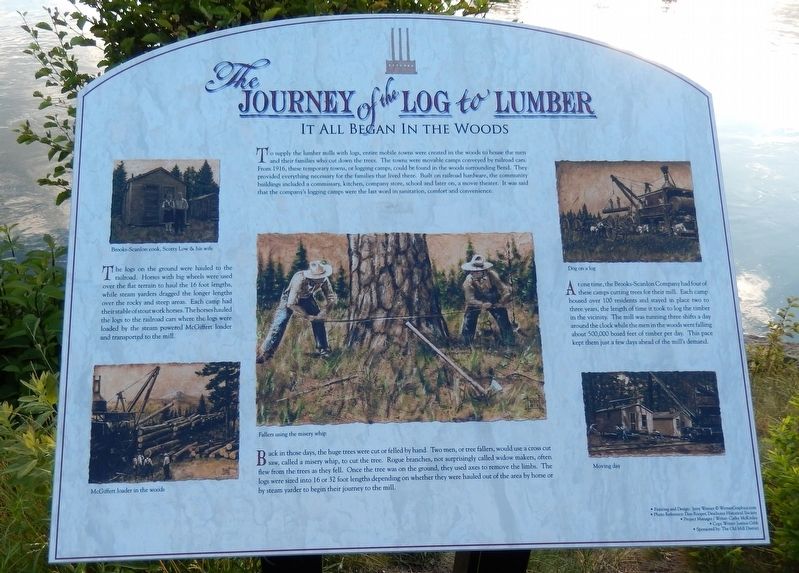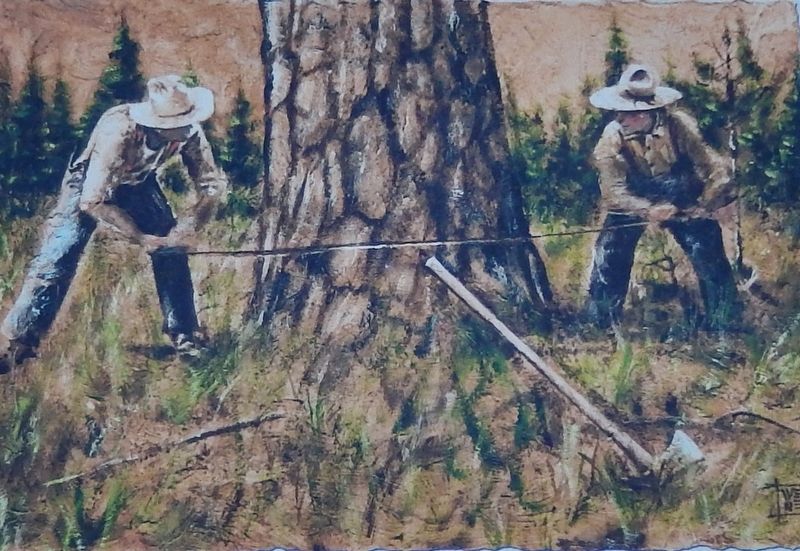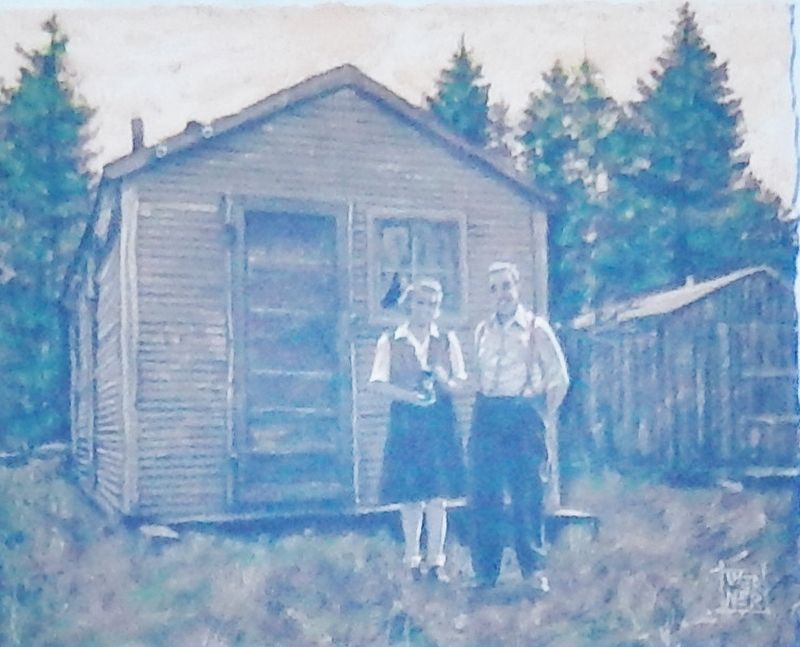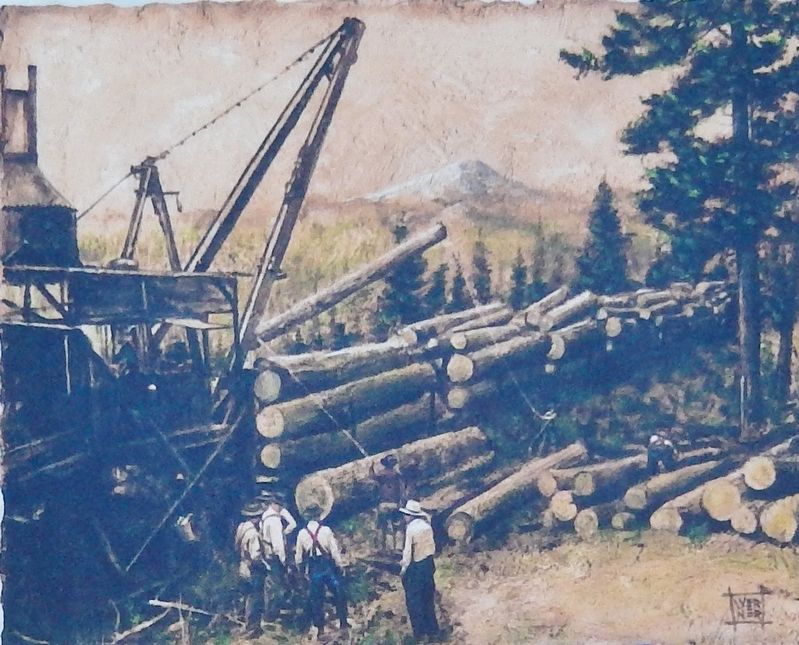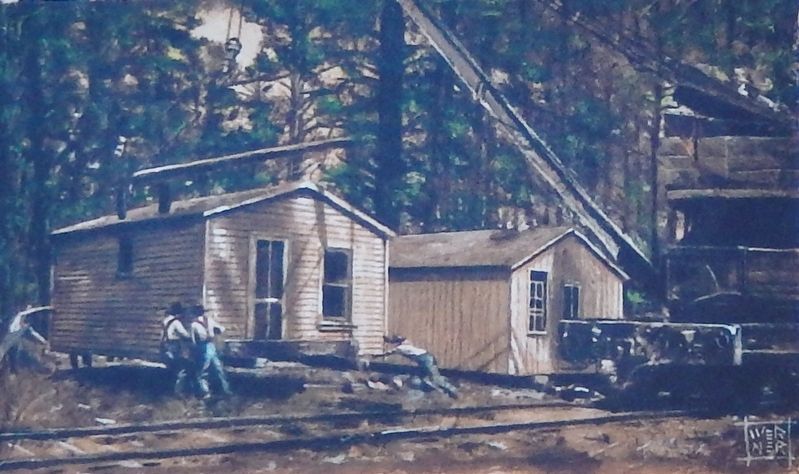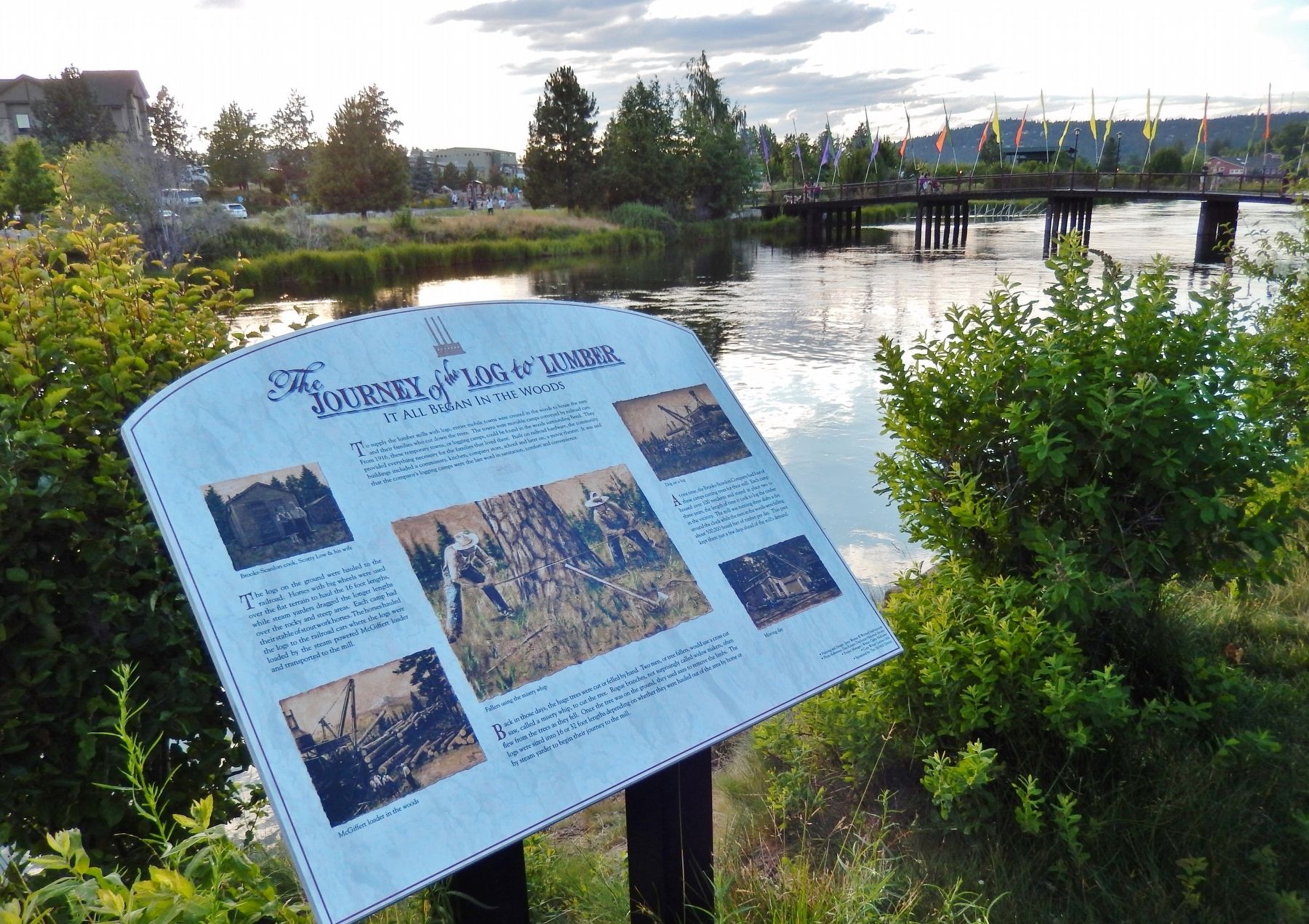Bend in Deschutes County, Oregon — The American West (Northwest)
Journey of the Log to Lumber
It All Began in the Woods
To supply the lumber mills with logs, entire mobile towns were created in the woods to house the men and their families who cut down the trees. The towns were movable camps conveyed by railroad cars. From 1916, these temporary towns, or logging camps, could be found in the woods surrounding Bend. They provided everything necessary for the families that lived there. Built on railroad hardware, the community buildings included a commissary, kitchen, company store, school and later on, a movie theater. It was said that the company's logging camps were the last word in sanitation, comfort and convenience.
The logs on the ground were hauled to the railroad. Horses with big wheels were used over the flat terrain to haul the 16 foot lengths, while steam yarders dragged the longer lengths over the rocky and steep areas. Each camp had their stable of stout work horses. The horses hauled the logs to the railroad cars where the logs were loaded by the steam powered McGiffert loader and transported to the mill.
Back in those days, the huge trees were cut or felled by hand. Two men, or tree fallers, would use a cross cut saw, called a misery whip, to cut the tree. Rogue branches, not surprisingly called widow makers, often flew from the trees as they fell. Once the tree was on the ground, they used axes to remove the limbs. The logs were sized into 16 or 32 foot lengths depending on whether they were hauled out of the area by horse or by steam yarder to begin their journey to the mill.
At one time, the Brooks-Scanlon Company had four of these camps cutting trees for their mill. Each camp housed over 100 residents and stayed in place two to three years, the length of time it took to log the timber in the vicinity. The mill was running three shifts a day around the clock while the men in the woods were falling about 500,000 board feet of timber per day. This pace kept them just a few days ahead of the mill's demand.
Erected by The Old Mill District.
Topics. This historical marker is listed in these topic lists: Horticulture & Forestry • Industry & Commerce • Railroads & Streetcars.
Location. 44° 2.668′ N, 121° 18.957′ W. Marker is in Bend, Oregon, in Deschutes County. Marker can be reached from SW Powerhouse Drive north of SW Columbia Street when traveling west. Marker is located along the Deschutes River walkway, on the east side of the river, in Bend's Old Mill District. Touch for map. Marker is at or near this postal address: 545 SW Powerhouse Drive, Bend OR 97702, United States of America. Touch for directions.
Other nearby markers. At least 8 other markers are within walking distance of this marker. Today's Old Mill District (about 300 feet away, measured in a direct line); Location, Location & Location (about 300 feet away); Thank Goodness for Water and Gravity (about 500 feet away); The Mill Transformed Trees into Highly Prized Lumber (about 700 feet away); Logs Finally Become Lumber (approx. 0.2 miles away); Home of Kathleen "Klondike Kate" Rockwell (approx. 0.8 miles away); "Klondike Kate" House (approx. 0.8 miles away); Old Bulletin Building (approx. 0.9 miles away). Touch for a list and map of all markers in Bend.
Related markers. Click here for a list of markers that are related to this marker. Old Mill District
Also see . . .
1. Brooks-Scanlon Lumber Company.
In 1896 a group of lumbermen by the names of Dwight F. Brooks, Lester R. Brooks, Anson S. Brooks and M.J. Scanlon opened a sawmill in Nickerson, Minnesota. By 1901 these men had formed the Brooks-Scanlon Lumber Company and started constructing other sawmills in Minnesota. Brooks-Scanlon started moving out of Minnesota when the supply of trees started to dwindle. The company commenced acquiring timberlands in central Oregon starting about 1905. Timber in the area was cheap, as without a means to ship finished product
to waiting markets the trees held little value. The company could see that central Oregon was not going to be devoid of transportation forever, and it was content to wait for it to arrive. (Submitted on February 8, 2018, by Cosmos Mariner of Cape Canaveral, Florida.)
2. The Brooks-Scanlon Lumber Co. changed the face of Bend.
when it opened its sawmill on the east bank of the Deschutes River in 1916. Along with the Shevlin-Hixon company on the opposite bank, the mill was the driving force behind Bend’s economy for decades. It produced millions of board-feet of lumber each year, employed hundreds of Bend families and helped spark the region’s first economic boom. (Submitted on February 8, 2018, by Cosmos Mariner of Cape Canaveral, Florida.)
Credits. This page was last revised on October 14, 2020. It was originally submitted on February 8, 2018, by Cosmos Mariner of Cape Canaveral, Florida. This page has been viewed 416 times since then and 57 times this year. Last updated on February 10, 2018, by Cosmos Mariner of Cape Canaveral, Florida. Photos: 1, 2, 3, 4, 5, 6. submitted on February 8, 2018, by Cosmos Mariner of Cape Canaveral, Florida. • Andrew Ruppenstein was the editor who published this page.
